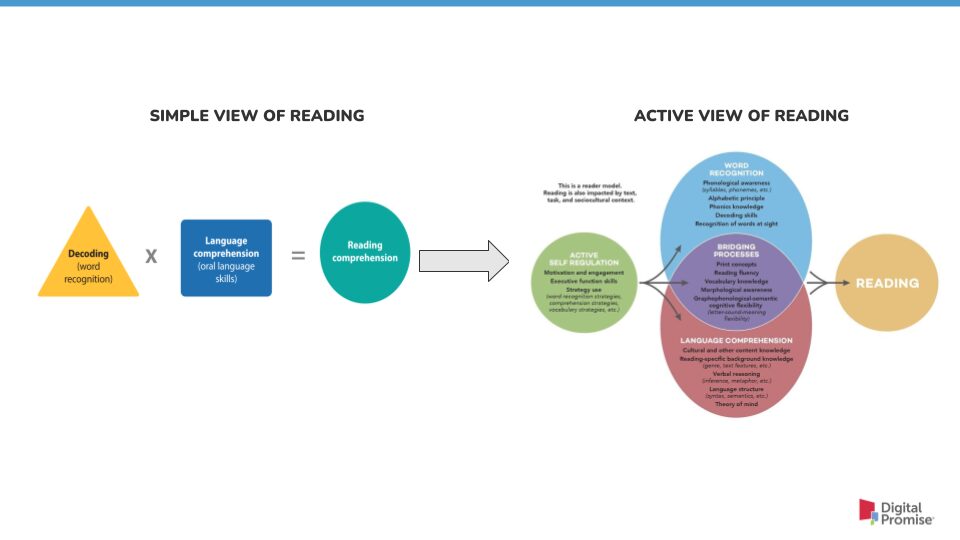
Reading interventions typically center on the simple view of reading where a learner must master decoding (word recognition and phonological awareness) and language comprehension (vocabulary and background knowledge) to become a proficient reader. Deficiencies in either can lead to reading difficulties.
The simple view of reading has one of the strongest evidence bases in education research; however, it does not provide sufficient insight into learners’ differing motivations to read. It may not account for sociocultural factors that influence reading, such as learner variability and situational context, particularly for students with additional support needs, including multilingual learners—who are a focus for U-GAIN Reading.
U-GAIN Reading is using the active view of reading to broaden our understanding of how to support young learners along their reading journeys. Developed by Nell Duke and Kelly Cartwright (2021), the active view of reading includes bridging processes between decoding and language comprehension and incorporates contextual factors related to self regulation, motivation, engagement, and executive function.

U-GAIN Reading is looking at the shift from the Simple View of Reading to the Active View of Reading.
These contextual factors impact the process of reading through what Duke and Cartwright refer to as “text, task, and sociocultural context,” particularly for multilingual learners. Maria Carlo, Ph.D., associate professor of child and family studies at South Florida University, shares:
Multilingual learners differ significantly in how cognitive, linguistic, and contextual factors interact to influence their reading development. These include prior experience with alphabetic writing systems, the quality and quantity of academic input and output, variation in background knowledge, and access to educators with specialized training to meet their needs.
These contextual considerations are at the heart of U-GAIN Reading’s research and are important to all K-12 reading interventions using GenAI to create, adapt, and support tutoring interactions with multilingual learners.
In our first year, we’ve focused on two challenges for multilingual students who use AI-based tutors, basing our work on Amira Learning, a tutor that listens to students as they read text aloud.
One challenge is that the automated speech recognition (ASR) technology may fail to understand what a multilingual student says, so we’re documenting where these tools fall short and how to address them.. Another challenge is that the tutor may misdiagnose a student’s engagement when the student interacts in ways that reflect their own culture and community. To help, we’re working on better tools to detect and support engagement.
Looking forward, we will build on these advances in ASR and engagement detection to design better reading supports for multilingual and all students, using GenAI to adjust text, task, and context in ways that connect with students’ backgrounds and enhance reading engagement and comprehension.
We’re seeking broad impacts by answering these questions:
The potential for using generative AIto personalize tutoring for readers with different linguistic backgrounds and needs is immense. Through leveraging the active view of reading and GenAI together, U-GAIN Reading aims to enable every learner to achieve proficiency by the end of third grade.
To learn more about U-GAIN Reading’s national efforts to improve literacy outcomes and shape the future of AI-enabled learning, please contact U-GAIN Reading.